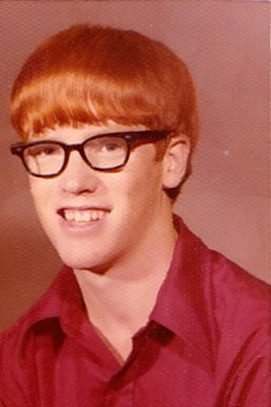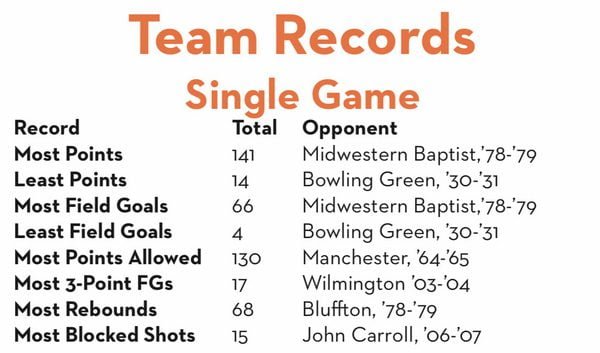
Regular readers know that I am a sports addict. The Coronavirus pandemic has caused all sorts of serious sports withdrawal symptoms for me. Why, just this past weekend, I searched the satellite for some sort of fix, only to find myself watching — I kid you not — a cherry-pit-spitting contest and lawnmower racing. Oh, how the mighty have fallen.
I played team baseball from little league through tenth grade. I was always good enough to make the team, but I certainly wasn’t an all-star. I suspect that the reason coaches gave me a second look was the fact that I was left-handed. That and I could run. I couldn’t hit a breaking ball to save my life, so my coaches typically used me to bunt and run like hell.
After high school, I played slow-pitch softball. My increasing girth made me a much better hitter, though I was slower afoot as the years went by. I was in my early thirties when, thanks to knee problems, I was forced to stop playing.
While baseball is my favorite sport to watch, basketball was my favorite sport to play. I enjoyed the physicality of the game, and skill-wise, I was a decent player. Again, being left-handed was a huge advantage in a game dominated by righties.
I attended three high schools during my playing years: Rincon High School in Tucson, Arizona, Riverdale High School in Mt Blanchard, Ohio, and Findlay High School in Findlay, Ohio. I attended Rincon for the last half of my tenth-grade year and Riverdale for the first few months of my eleventh-grade year. Riverdale, a small, rural high school, was a perfect spot for me to ply my basketball talents. Unfortunately, before practice started, the church family I was living with at the time decided it was time for me to move. This meant I had to move back to Findlay, a school in which I had no chance of making the basketball team.
At the time, Findlay High School was one the largest schools in Ohio. Hundreds of boys would turn out for basketball tryouts, hoping to land a handful of open bench spots available any given year. I didn’t stand a chance making the team, so I decided, instead, to play for Trinity Baptist Church in a hyper-competitive high school basketball league. This league allowed boys who didn’t make local high school teams an opportunity to play. I was one such boy.
My coach was my youth director, Bruce Turner. In a 2014 post titled, Dear Bruce Turner, I wrote:
You were my basketball coach. Trinity sponsored a team in the ultra-competitive high school church basketball league. One game I had a terrible night shooting the ball. I was frustrated and I told you I wanted out of the game. You refused and made me play the whole game. My shooting didn’t get any better but I learned a life lesson that I passed on to all my children years later.
All told, I played basketball for Trinity for three years.
In the fall of 1976, I enrolled for classes at Midwestern Baptist College in Pontiac, Michigan. As a freshman, I was asked if I was interested in playing on the college basketball team. The very fact that I was asked to play should tell you all you need to know about the quality of Midwestern’s team — think intramural basketball. Midwestern, with an enrollment of 400 or so students, played other nearby small Christian colleges. My college basketball career quickly ended one day during practice as I was defending one of my teammates. As he went up to shoot the ball, I jumped, swatting the ball. Unfortunately, the middle finger on my left hand hit the ball, causing the finger to dislocate. Coach couldn’t reset it, so I was taken to the emergency room. Not only was the finger dislocated, but it was also jammed into the knuckle. The ER doctor, at first, couldn’t reset the finger either. Finally, he said, “Bruce, this is going to hurt.” He made sure the bed was locked so it couldn’t move, put his foot on the bottom of the bed, grabbed my finger, and violently jerked it back into place. And man was he right. Over the years, I had numerous sports injuries, but this one hurt like hell.

While this injury ended my Midwestern playing career, it almost caused me to get expelled from school. In a 2015 post titled, Thou Shalt Not Touch: The Six-Inch Rule, I wrote:
Another time I was written up for breaking the six-inch rule. The six-inch rule was a rule meant to keep unmarried men and women from getting too close to each other. Six inches is about the width of a songbook or a Bible and unmarried students were not allowed to be closer than a songbook or a Bible from each other.
I was on the college basketball team. One day during practice I slapped at a basketball and severely dislocated a finger. I was rushed to the emergency room and the doctor was able to fix the dislocation. I’m left-handed and the dislocation had occurred on my left hand.
Every male student was required to wear a tie to class. I found it very difficult to tie a tie with one hand, so one day I asked my fiancé to tie my tie for me. In doing so, we broke the six-inch rule. Someone anonymously turned us in for breaking the six-inch rule and we had to appear before the disciplinary committee to answer the charges against us.
We each received twenty-five demerits for breaking the six-inch rule. We were warned that if we broke the six-inch rule again, we would be expelled from school. Little did they know that we had been breaking it for quite some time.
During my sophomore year at Midwestern, the college’s athletic director — a friend of mine at the time and the soloist at my wedding — scheduled a basketball game with Ohio Northern University in Ada, Ohio — an NCAA Division III school. When I saw that Ohio Northern was on the schedule, I asked the athletic director, a Michigander, if he knew anything about the school. He did not. I suggested that he might want to rethink playing the game, but he assured me it would be fine. “Fine” turned out to be Midwestern’s basketball team playing George Custer and the Seventh Cavalry at Little Big Horn. Talk about slaughter.

Today, I tracked down the stats for this game. Ohio Northern won by 107 points, 141-34. Ohio Northern made 66 field goals, accounting for 132 of their 141 points. This means they shot, at most nine free throws. As you can see, try as they might Midwestern’s team not only couldn’t shoot the ball, neither could they play defense.
Polly and I attended this game. I still remember the pall that came over the crowd as Ohio Northern eviscerated the home team. After the game, Dr. Tom Malone, the president of Midwestern and the pastor of nearby Emanuel Baptist Church, was livid over the loss. Malone, himself, was a cutthroat, physical basketball player. I played several games with Doc. He definitely subscribed to the “no blood, no foul” school of play — as did I. I have no doubt that he wanted to pummel the athletic director over Midwestern’s embarrassing loss to Ohio Northern. Expulsion was a real possibility, I thought at the time. Fortunately, the athletic director survived Doc’s wrath.
After Midwestern, I continued to play basketball into my early thirties. I typically played year-round, often two to three times a week in the winter. During the summer, I would play outside pick-up games. I suspect that it was playing sports that kept my weight relatively in check for so many years. As with softball, knee problems — which I battle to this day — put an end to my basketball career. I remember seeing an orthopedic surgeon in the early 1980s about my knees. He told me, “either quit or you’ll be in a wheelchair someday.” I ignored him for another year or so, but once I reached the place of having to crawl up the stairs to get to our bedroom, I decided to hang up my Converse sneakers and call it a day.
These days, my involvement with basketball is limited to watching my grandchildren play junior high and high school basketball and photographing boys’ and girls’ games for nearby Fairview High School. There’s still nothing like an exciting prep school game on a cold winter’s night. Here’s to hoping that such games will be played yet again in 2020-2021. I sure don’t want to be spending the winter months watching “sports” I have never heard of on ESPN.
Bruce Gerencser, 68, lives in rural Northwest Ohio with his wife of 47 years. He and his wife have six grown children and sixteen grandchildren. Bruce pastored Evangelical churches for twenty-five years in Ohio, Texas, and Michigan. Bruce left the ministry in 2005, and in 2008 he left Christianity. Bruce is now a humanist and an atheist.
Your comments are welcome and appreciated. All first-time comments are moderated. Please read the commenting rules before commenting.
You can email Bruce via the Contact Form.
